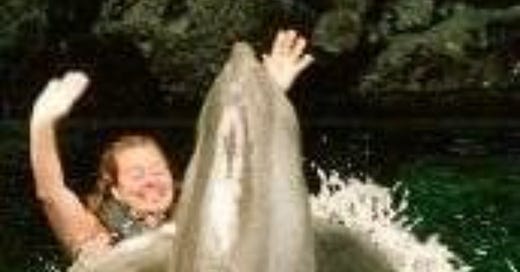Live Everyday Knowing You Did Your Best
“The people who are crazy enough to think they can change the world are the ones who will.”
I always tell my students and proteges to leave the workday doing one thing they are good at. Sometimes, it is just opening a can of cat food. My cats LOVE that, and I am successful in making them happy. I learned this when I conned my way into a dolphin training program in Hawaii. We were staying at a swanky hotel with a pod of dolphins used to help people with mental problems. People with depression, autism, and other brain-misfiring illnesses were said to be supported by the presence of the vibrational “talking” the dolphins did under the water. I was fascinated and wanted to know more.
I went to the hotel manager the next day and talked him into letting me observe the program for five days as I was writing about it. I did not have a job yet, but I knew with a great article, I would get one.
On my first day there, they told me I had to learn the process they used to train the dolphin first. Classical conditioning (Pavlov) pairs the bridging stimulus with a primary reinforcer, like food or a rubdown. After numerous trials, the bridge becomes associated with reinforcement and a conditioned (or secondary)reinforcement. The animal has learned that a whistle means it has done something correctly and can expect a reinforcer.
They gave me a mouse in a doll house, and using these techniques, I was supposed to get the mouse to unroll a flag and bring it back. Since mice have no emotional attachment, to teach him meant that I had to set the animal up to succeed (get cheese). I started with the basics of commands and giving the bridge and reward.
The secret: ALWAYS SET THE ANIMAL UP TO SUCCEED.
Even if you must return to the most basic, like coming out of your cage, you always leave the animal knowing he succeeded. Then, they are more likely to learn.
After I got the mouse to do his tricks, they brought me a pound puppy. An abused dog who was super shy would not even come out of his crate. They explained that the dog (like the dolphins) is only interested in the most fascinating person in the room. You must be that person. For a dog, a happy and welcoming personality is what they look for, so my goal was to get this dog’s attention.
I did with lots of whistle-like noises, jumping and laughing. Within an hour, I had it answering commands of come, sit, stay, and I even got it to jump through a hoop.
It was on the dolphins. These giant mammals have as many teeth as sharp as a shark. The first boy they put me in the water with weighed 1600 pounds. I wore a fanny pack filled with fish, and upon getting in the water, he came to me, unzipped my pouch, and stole all my fish. I could hear him snickering underwater.
I became proficient by the end of my week, which is still one of the most profound things I have ever done.
When I returned home, I started covertly using Pavlov on my husband, children, and dogs. It works still; set them up to succeed, and they will behave how you want them to. I now use it in business, although the whistleblow is too apparent, and I use encouraging words as I witness them trying.
This story is an excerpt from my upcoming nonfiction book, The Universal Conspiracy.
Writing Exercise:
Rewrite your best day. Sit quietly and remember feeling loved, safe, and happy. Write a story from that memory. Show us where you are, who is with you, and what you think and feel, even what you smell. Bring that feeling back to the surface and turn it into prose.
Write at least 500 words, but do as many as you want. Send it to me if you want feedback. I only find what is good—a new way of critiquing your writing.
This story is an excerpt from her nonfiction book, The Universal Conspiracy.
More about Teri Bayus: www.TeriBayus.com
The Greatest Of Ease can be found here: www.TheGreatestOfEase.com
Follow Teri on her Substack for writing tips and podcasts, You’re Making That Up!
#ItsTimeToTellYourStory #AmWriting #WritingPrompts #Substack





